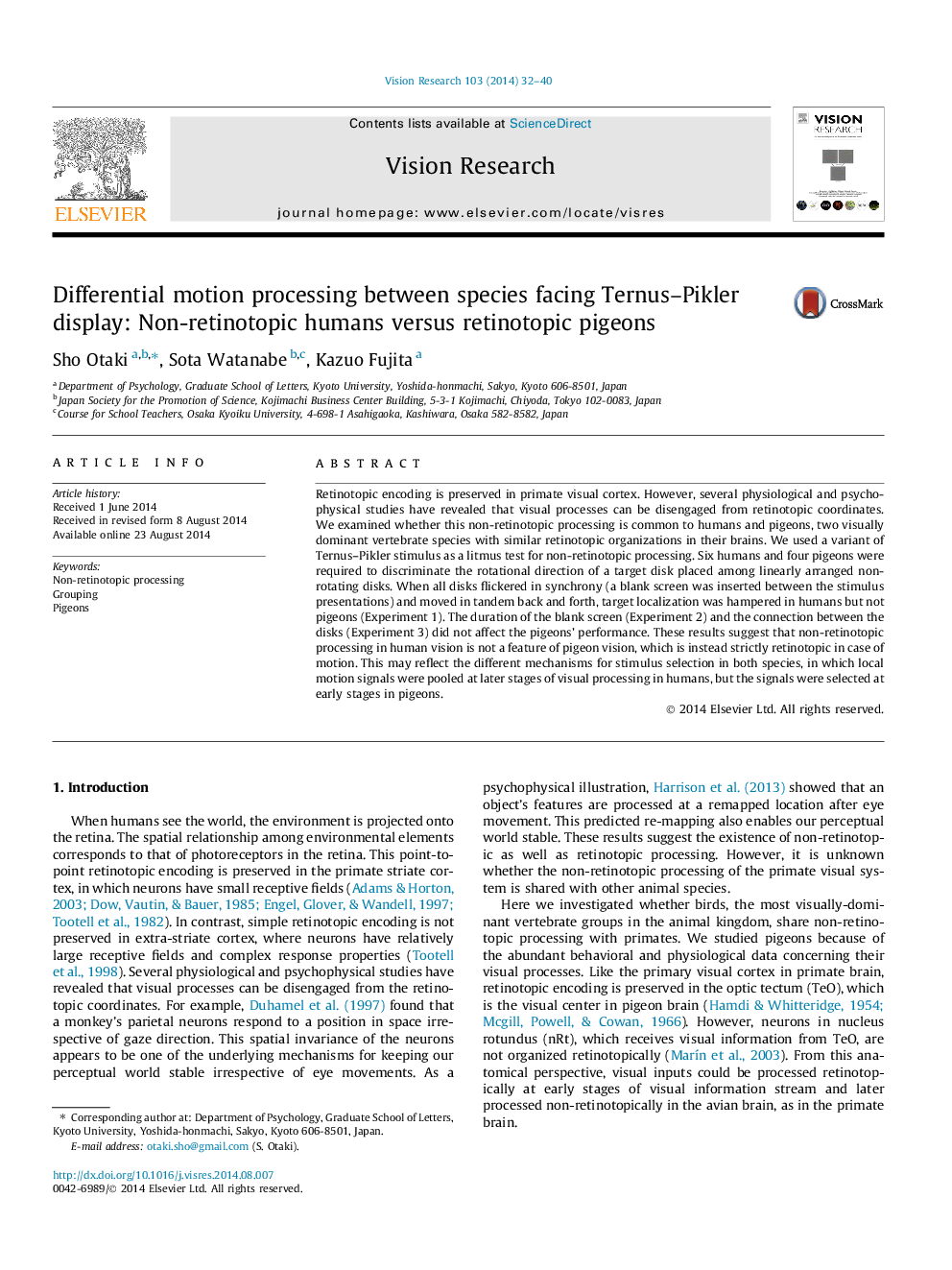| Article ID | Journal | Published Year | Pages | File Type |
|---|---|---|---|---|
| 6203394 | Vision Research | 2014 | 9 Pages |
â¢Human motion processing was non-retinotopic facing Ternus-Pikler display.â¢Pigeon motion processing was strictly retinotopic.â¢No spatio-temporal factor affected the retinotopic motion processing in pigeons.
Retinotopic encoding is preserved in primate visual cortex. However, several physiological and psychophysical studies have revealed that visual processes can be disengaged from retinotopic coordinates. We examined whether this non-retinotopic processing is common to humans and pigeons, two visually dominant vertebrate species with similar retinotopic organizations in their brains. We used a variant of Ternus-Pikler stimulus as a litmus test for non-retinotopic processing. Six humans and four pigeons were required to discriminate the rotational direction of a target disk placed among linearly arranged non-rotating disks. When all disks flickered in synchrony (a blank screen was inserted between the stimulus presentations) and moved in tandem back and forth, target localization was hampered in humans but not pigeons (Experiment 1). The duration of the blank screen (Experiment 2) and the connection between the disks (Experiment 3) did not affect the pigeons' performance. These results suggest that non-retinotopic processing in human vision is not a feature of pigeon vision, which is instead strictly retinotopic in case of motion. This may reflect the different mechanisms for stimulus selection in both species, in which local motion signals were pooled at later stages of visual processing in humans, but the signals were selected at early stages in pigeons.
